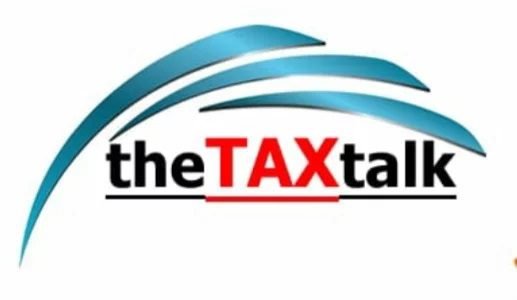![]()
Lower or Nil TDS Certificate: A Lifeline for NRIs to Avoid Excess Tax Deduction
Non-Resident Indians (NRIs) investing in India, especially in immovable property, often find themselves navigating a maze of tax regulations that are far more taxing than just financial. One of the most pressing issues is the excessive Tax Deducted at Source (TDS) on income arising in India-be it capital gains on property sale or rental income. While exemptions and deductions may ultimately reduce the tax liability, TDS is often levied upfront on the gross amount, not the net taxable income. This causes significant liquidity strain and delays in refunds. The solution? A proactive application for a Lower or Nil TDS Deduction Certificate (LDC) under Section 197 of the Income Tax Act.
Understanding the Problem: Why NRIs Suffer More?
TDS under Section 195 is applicable when a person makes a payment to a non-resident that is chargeable to tax in India. This includes capital gains, interest, rent, and dividend income. While Indian residents may benefit from TDS at lower rates and exemptions, NRIs face TDS at flat rates-often 20% to 30%-irrespective of their actual tax liability.
Here’s a common scenario: An NRI sells a property in India. While the actual capital gain is ₹50 lakhs, TDS is deducted on the full sale value of ₹2.5 crore at 12.5% or higher. That’s ₹31.25 lakhs gone instantly to the tax department. The NRI can only claim the refund while filing the return, which could take up to 18 months if the return is selected for scrutiny.
The result? Locked capital, reduced reinvestment ability, and strained cash flow.
The Legal Remedy: Section 197 and the LDC
Section 197 of the Income Tax Act provides a statutory remedy by allowing any assessee-resident or non-resident-to apply for a certificate for lower or NIL deduction of tax at source, if their actual tax liability is expected to be lower than the TDS applicable under standard rates.
This certificate authorizes the payer (buyer, bank, tenant, etc.) to deduct tax at a reduced rate-or not at all-during the financial year. The application is made in Form 13 via the TRACES portal, and the process typically takes 30–45 days.
Practical Illustration
| Particulars | Without LDC | With LDC @ 3% |
| Sale Value | ₹2.5 Cr | ₹2.5 Cr |
| Indexed Cost | ₹2.0 Cr | ₹2.0 Cr |
| Capital Gain | ₹50 Lakhs | ₹50 Lakhs |
| Tax Liability (12.5%) | ₹6.25 Lakhs | ₹6.25 Lakhs |
| TDS Deducted | ₹31.25 Lakhs | ₹7.50 Lakhs |
| Refund Due | ₹25 Lakhs | ₹1.25 Lakhs |
This highlights how timely application for LDC can prevent over-taxation and protect liquidity.
Eligible Transactions for LDC
LDC can be applied for TDS deductions under:
- Section 195 (NRIs – Sale of Property, Rent, Interest)
- Section 194 series (Interest, Professional Fees, Commission)
- Section 192 (Salary)
- and many others.
For NRIs, key income streams where LDC becomes vital:
- Capital Gains on property sales (especially with Section 54/54F/54EC exemption plans)
- Rental Income from Indian property
- Interest from NRO FDs
- Dividend Income
Note: Form 15G/15H is not available to NRIs—LDC is the only proactive relief available.
Key Judicial Precedents
- GE India Technology Centre Pvt. Ltd. v. CIT (327 ITR 456): TDS should be limited to the portion of income “chargeable under the Act.”
- Mohiuddin v. ADIT (53 taxmann.com102): ITAT Bangalore held that exemptions like 54F must be considered before TDS under Section 195.
- Tata Teleservices (Maharashtra) Ltd. (Bom HC): AO must pass a speaking order on LDC applications, else it can be challenged under Section 264.
Challenges Faced by NRIs in Absence of LDC
1. Liquidity Crunch: Excessive TDS disrupts cash flow and hinders reinvestment.
2. Procedural Delays: Refunds can take more than a year.
3. Legal Risk for Buyers: Misclassifying NRI status and under-deducting TDS can result in proceedings under Section 201.
4. No Retrospective Relief: LDC is valid only from the date of issuance, not retrospectively.
5. Digital & Jurisdictional Barriers: NRIs often struggle with the digital application process and inter-jurisdictional complexities.
Timelines and Process
When to Apply?
- Ideally, before or on the date of the transaction.
- Application window for the next FY opens from 28th February to 15th March.
How to Apply?
- File Form 13through TRACES (Non-Resident portal).
- Attach:
- Proof of transaction (sale deed, rent agreement)
- Proof of residential status (passport, TRC)
- Income estimation and tax computation
- Cost details (indexed cost, improvement, expenses)
- Investments for exemption (CGAS receipts, Section 54 proofs)
Issuance & Validity
- Issued within 30–45 days
- Valid for the financial year or period specified.
- Specific to payerand transaction.
Special Situations
- Joint Ownership: Each co-owner must apply separately.
- Token Amounts: TDS applies even on booking/token amounts, unless LDC is obtained.
- AO Rejection: Must provide valid reasons; assessee can challenge under Section 264.
Role of Chartered Accountants
CAs act as crucial intermediaries, helping:
- Evaluate eligibility for LDC
- Estimate correct tax liability
- File accurate and complete Form 13
- Liaise with AOs for timely issuance
- Mitigate compliance and litigation risks for NRIs
Final Thoughts
For NRIs, the Lower or Nil TDS Certificate under Section 197 is not just a tax-saving tool-it is a cash flow management weapon, a litigation avoidance shield, and a compliance enabler. Given the high rates and procedural hurdles, relying on post-facto refunds is an expensive and inefficient strategy. The smarter move? Apply for an LDC in advance with the help of an experienced tax advisor.
As the Income Tax Act continues to evolve and digitize, NRIs must evolve too-not just by complying, but by planning proactively. A well-timed LDC application could make the difference between a delayed refund and a seamless, tax-aligned transaction.


